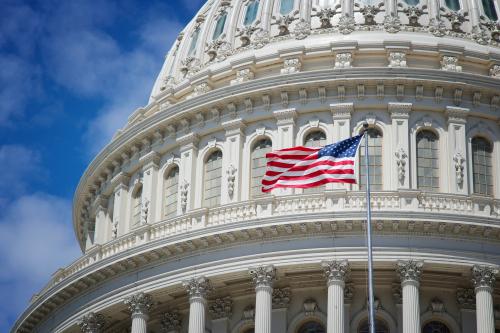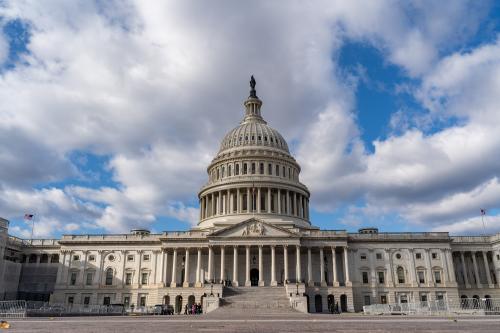Historically, patients who were unexpectedly treated by a provider that did not accept their insurance often received “surprise” out-of-network bills. The No Surprises Act (NSA) has successfully shielded patients from most forms of surprise out-of-network bills by requiring insurers to apply only in-network cost-sharing in these cases and barring providers from “balance billing” patients for additional amounts. However, experience with the arbitration system designed to determine what insurers must pay providers in these cases has been less encouraging. Arbitration volumes have been high, generating large and wasteful administrative costs. Likely related, decisions have varied widely from arbitrator to arbitrator, even for similar cases. These challenges were predictable and hold lessons for future policymaking.
How we got here
Policymakers considered multiple approaches to determining what the insurer should pay the provider for the types of out-of-network care encompassed by the NSA. One would have directly specified how much the insurer was required to pay for any given out-of-network service. A second would have effectively required clinicians working in hospitals to participate in the same insurance networks as the facility, leaving market negotiations between facilities, clinicians, and insurers to determine prices.1
Policymakers ultimately chose a third option. Namely, the NSA established an independent dispute resolution (IDR) system where payment disputes would be resolved by arbitrators. Under IDR, the disputing parties select an arbitrator by mutual agreement or, if they fail to do so, have one assigned to them by the federal government. Each party is required to submit an offer to the arbitrator who then chooses between the offers. Arbitrators are told to consider a host of factors when deciding between offers but not told how to translate those factors into a final decision.
This approach ostensibly gave arbitrators flexibility to tailor decisions to the facts of each case, but it also created the potential for different arbitrators to render different decisions even when facing identical facts. Motivated at least partly by a desire for consistency, the Biden administration initially promulgated relatively structured guidance for how arbitrators should consider factors when settling disputes, but this guidance was thrown out in court. It subsequently promulgated a second round of less structured guidance, which was thrown out by the same judge. (The administration is currently appealing the judge’s second ruling.)
Potential downsides of IDR
A key downside of using IDR to settle payment disputes is that the process is costly. The parties to a dispute must pay hundreds of dollars in fees per dispute to cover the costs that arbitrators and the federal government incur. They also incur additional internal costs to engage with the process. Most of these costs are likely ultimately borne by consumers as higher premiums and cost-sharing.
The aggregate costs of IDR will be large if the process is used frequently, which depends on whether disputing parties have shared expectations about how arbitrators will decide cases. When disputing parties have shared expectations, they have a mutual interest in striking an agreement outside IDR that is close to the expected IDR outcome since doing so generates the same ultimate payment but avoids the costs of IDR. As a result, use of IDR will be rare. But when parties have divergent expectations, striking this type of bargain is difficult or impossible, so use of IDR will be more common.
In practice, there is reason to worry that disputing parties will often have divergent expectations, at least in the early years of this type of system. Because IDR grants arbitrators substantial discretion, the only viable way to predict what will happen in a future case is likely to be to learn from prior IDR outcomes. But individual arbitrators are likely to use their discretion in different ways, causing parties to have inconsistent experiences with IDR that are difficult to extrapolate from. We have argued that these problems are likely to be especially severe in the absence of clear guidance to arbitrators on how to apply the statutory factors.
Early experiences with IDR
Early experience suggests that these concerns about IDR—and about an unstructured IDR process in particular—are being borne out in practice. The Government Accountability Office (GAO) recently reported the results of interviews with a range of stakeholders involved in the IDR process. GAO reported that the disputing parties it interviewed raised concerns that there was a “high degree of variability between certified IDR entities and a lack of consistency in decision-making,” consistent with the concerns outlined above.
Also consistent with these concerns, IDR volume has been ample. Drawing largely on data previously reported by the relevant agencies, GAO highlights that nearly 490,000 disputes were initiated from April 2022 through June 2023. Given expected IDR fees, this level of volume will generate hundreds of millions of dollars in fees annually. Notably, caseloads are not only large but also growing over time. While insurers and providers may ultimately gain a better idea about how IDR outcomes are determined, allowing them to more easily resolve disputes outside IDR, these data suggest that this costly learning process is far from over.
Even with these high volumes, IDR might still be preferable to other means of determining payment for out-of-network services if arbitrators’ flexibility allowed them to tailor prices to specific cases in ways that better approximated the prices in a well-functioning market. While data on IDR outcomes are not yet available, we are doubtful that this has been the case. Arbitrators’ main incentives are to minimize their costs of handling cases while also rendering decisions that are similar enough to competing arbiters (so as to remain attractive to both insurers and providers seeking an arbitrator for a future dispute). There is no reason to expect these incentives to lead arbitrators to make the “right” decisions.2 (This would be true even if the statute enumerated the “right” set of factors for arbitrators to consider, which it arguably did not.)
Lessons for policymakers
The experience with arbitration to date should serve as a cautionary tale for future policymaking. Should policymakers decide to regulate payment rates or contracts for other items and services, they should recognize that relying on a cumbersome and opaque process such as IDR can generate substantial—and hard to justify—administrative costs. Applied to the NSA itself, this experience suggests that there would be advantages to eliminating the IDR process and replacing it with an explicit payment standard or a requirement that facility-based clinicians contract with the same insurance plans as the facility.
Where policymakers do elect to rely on arbitration, experience with the NSA illustrates the potential benefits of offering clearer guidance to arbitrators, which could make it easier for parties to predict IDR outcomes and thereby reduce use of IDR. In the case of the NSA itself, this could be accomplished through issuing guidance to IDR entities that sets forth a coherent and consistent framework to translate the various factors that arbitrators are required to consider into payment decisions, similar to that in the Biden Administration’s initial interim final rule. Narrowing which factors arbitrators are supposed to consider could also help. While an altered IDR process would still retain many of the drawbacks noted above, these modifications could ameliorate some of the problems observed thus far.
-
Acknowledgements and disclosures
The authors gratefully acknowledge helpful comments from Marta Wosińska, as well as excellent research and publishing assistance from Vani Agarwal and Caitlin Rowley.
The Brookings Institution is financed through the support of a diverse array of foundations, corporations, governments, individuals, as well as an endowment. A list of donors can be found in our annual reports published online here. The findings, interpretations, and conclusions in this report are solely those of its author(s) and are not influenced by any donation.
-
Footnotes
- This second approach could have addressed instances where a patient at an in-network facility receives care from an out-of-network clinician, but a different approach would have been required to address emergency services delivered at out-of-network facilities, which are also subject to the NSA.
- Arbitrators’ incentives for conformity may help reduce cross-arbitrator variability in decision-making over time, which may ultimately improve predictability and thereby reduce IDR volumes, although this may take a long time.
The Brookings Institution is committed to quality, independence, and impact.
We are supported by a diverse array of funders. In line with our values and policies, each Brookings publication represents the sole views of its author(s).









Commentary
Assessing early experience with arbitration under the No Surprises Act
January 16, 2024